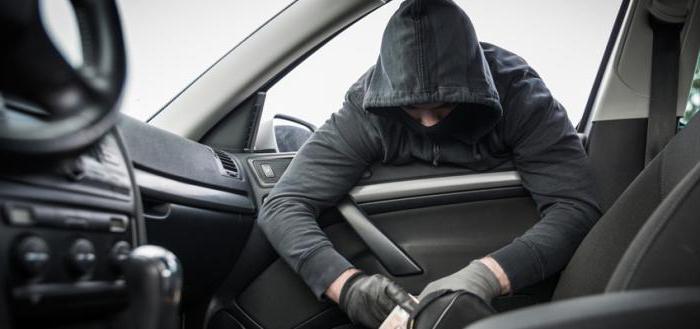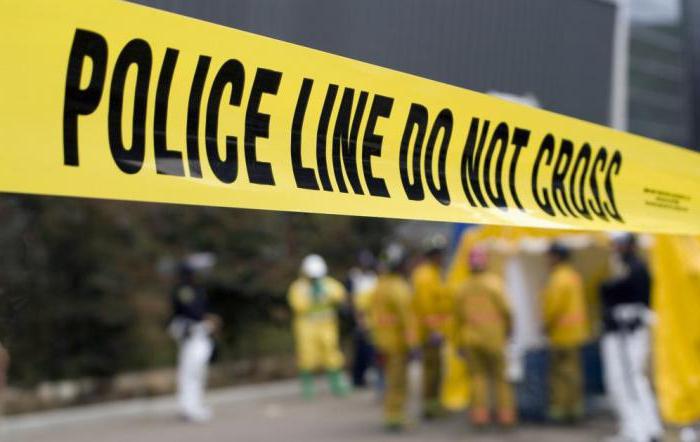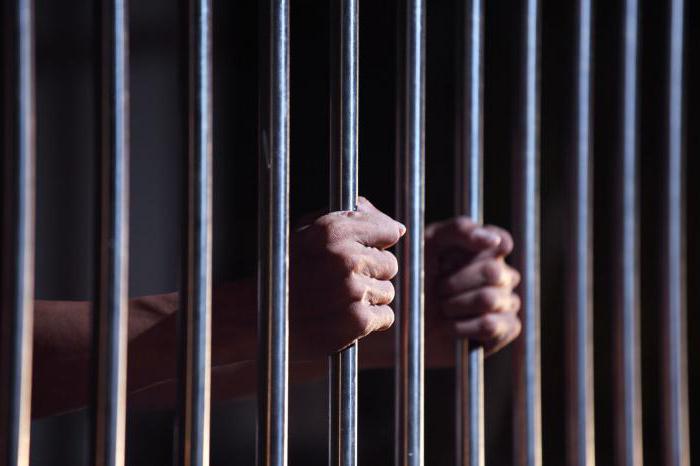Criminal proceedings are a very large and complex branch of law. One of the fundamental roles here is evidence. They are used at all stages of the criminal process. In turn, the stages of the proceedings contain various cases and events. About what exactly circumstances are subject to proof in a criminal case will be described in this article.
Code of Criminal Procedure

The list of situations to be proved is recorded in the Russian Code of Criminal Procedure (Code of Criminal Procedure). It is this law that establishes the rules according to which legal proceedings should be implemented. Code of Criminal Procedure is based on the following principles:
- compliance with the law in production;
- establishing reasonable punishment for a proven crime;
- complete independence of judges;
- the inviolability of the person, as well as respect for her honor and dignity;
- inviolability of the home and other types of private property;
- maintaining confidentiality of correspondence and telephone conversations;
- protection of civil liberties and rights;
- principle of free assessment of available evidence;
- strict adherence to professional language in criminal proceedings;
- opportunity to appeal procedural decisions and actions of officials;
- competitiveness of the parties involved in the paperwork;
- observance of the presumption of innocence.
In accordance with all these principles, criminal proceedings must be implemented. In particular, consideration of circumstances to be proved in a criminal case must be implemented in accordance with the principles and ideas given. What are these circumstances? Article 73 of the Code of Criminal Procedure indicates the following:
- information about the crime itself - about the time, place, method of commission, etc.
- the amount of harm done and its nature;
- extenuating and aggravating circumstances;
- information characterizing the identity of the accused;
- motives of the criminal, form of his guilt;
- factors completely excluding guilt;
- information proving the misappropriation of property;
- factors entailing exemption from criminal liability.
Together, all elements form the subject of proof. The subject affects the content of the indictment, the judicial opinion and sentence. Each circumstance and the method of proving it will be described below.
Evidence of a criminal act

This group of circumstances to be proved in a criminal case is connected with criminal events or with facts of violation of the law. The first circumstances open at the stage of inquiry or preliminary investigation. Later, all collected information is transferred to the court, where it is subject to a thorough analysis.
Information about the crime includes information about the place and time of its commission. What is meant by place? This is a sign that allows you to establish whether the accused was in the territory where the violation of the law occurred. The same thing over time, it allows you to either refute or confirm the alibi.
In judicial practice, all circumstances to be proved under Art. 73 Code of Criminal Procedure, must comply with the following scheme.
- The presence of a certain event that is illegal. The punishment for him should be fixed in the Russian Criminal Code. This, for example, killing a person, beating, robbery, etc. It is necessary to establish the correspondence of the event to the concept of crime, which is recorded in article 14 of the Criminal Code of the Russian Federation.
- The consequences of the event. The damage or harm caused during the commission of a crime is analyzed.
- A causal relationship is established between a criminal event and harmful consequences.
Next, we should talk about another circumstance to be proved in a criminal case - about the subject of the crime.
Guilty face

To establish the fact of guilt of a person suspected of breaking the law, it is necessary to carry out a number of procedures. Initially, the subject of the crime should be determined, and then the subjective side should be investigated. The subject is the person involved in the crime. The subjective side is the attitude of the accused subject to the criminal act incriminated to him. Both elements presented are the most important circumstances to be proved in a criminal case.
The following should establish the form of guilt of the crime. It can be expressed in one of two types: negligence and intentionality. So, a person can be killed due to the accidental action of the subject or intentionally, due to a pre-formed malicious intent. In fact, a lot depends on the form of the crime. The court always pays attention to it and, as a result, makes a certain verdict. No less important role is played by the goals of the crime, as well as its motive.
Who can be prosecuted? Under general conditions, according to Article 19 of the Criminal Code of the Russian Federation, such is a person 16 years of age or older, sane and competent. In this case, a person can be guided by a wide variety of motives when committing a crime. Specialists must competently put together in a single chain everything that guided a person at the time of breaking the law. It is the motive that will allow us to separate light harm from hooliganism, beatings from torture, etc.
It is also necessary to characterize the identity of the accused. For this, the conditions and causes of the crime are investigated: the presence of asocial views, the results of external negative impacts, the situation in which the law was violated, etc. All this belongs to the category of circumstances to be proved.
Nature of harm

Having dealt with the subject and subjective side of the crime, it is worth paying attention to other circumstances to be proved under criminal law. In particular, it is necessary to talk about the nature of the criminal act and the ways of its establishment.
The qualification degree of the criminal offense depends on the size and nature of the damage: the severity of the punishment, the amount of damage, the necessary compensation, etc. are determined. The most frequent harm resulting from the crime is related to human health. In this case, you will have to study the severity of the injuries, the amount of treatment, mental disorders, etc.
In second place is material damage. It is associated with criminal acts of a property nature. You have to prove the value of the stolen, its objective value, the consequences of harm and much more. An important factor here will be the income of the victim.
Finally, in criminal law, moral harm occurs. It is associated with the intangible benefits provided to a person from birth. It is worth paying attention to personal rights of a non-property nature - these are related, copyright, patent and other rights.
All the circumstances presented, subject to proof under criminal law, can be excluded, mitigated or become grave. The reasons and prerequisites for such processes will be described below.
Exceptional Cases
Circumstances subject to proof under the CPC and entailing the complete exclusion of a criminal case are not so common in the field of law. Most of them are connected with situations critical or dangerous for the accused. For example, a man during a natural disaster saved his or someone else's life.However, he formally violated the law - for example, destroyed someone’s property. It is necessary to prove the feasibility of committed acts belonging to the category of criminal. This can be done by comparing them with the following list:
- necessary self-defense;
- emergency cases;
- causing harm during the detention of a person suspected of breaking the law;
- coercion of a mental or physical nature (violation of the law under threats or violence);
- execution of an order or order.
In criminal law, there is another group of circumstances excluding legal proceedings that are subject to proof in a criminal case. This is the insignificance of the act, its decriminalization, lack of corpus delicti or refusal of it.
Aggravating and mitigating circumstances
The extent and nature of the liability may vary depending on a number of identified circumstances. The identity of the accused may be characterized by aggravating or mitigating circumstances. The simplest and most common example of an aggravating circumstance is the alcohol intoxication of the accused. In this case, the offender had to take alcohol on his own. If one succeeds in proving that the drunkenness was caused by violent means, not at the will of the accused, then the aggravating circumstance is transformed into a mitigating one.
It is also worth paying attention to other circumstances and conditions, which could aggravate the degree of responsibility. This, for example, mental or physical deviations from the victim, his young age or being subordinate to the accused.
Irresistible external circumstances may serve as mitigating factors. For example, a serious illness of the accused, the fact of his repentance and much more.
To identify circumstances of aggravating or mitigating nature, you need to work very well. It is necessary to collect data on previous convictions, information from the place of study or work, a description from military service, etc. Nevertheless, the search and establishment of circumstances to be proved in a criminal case is a direct responsibility of individual officials.
Newly discovered circumstances

A court verdict may come into force, after which a person with the official status of a criminal will begin to serve his sentence. Are there any chances to close the criminal case and rescue the once accused person to freedom? Such an opportunity exists, but only at the discovery of new circumstances to be proved. These are all kinds of cases and situations that need to be investigated in a resumed criminal case. Here are some things to watch out for:
- trial of a criminal case by the European Court of Human Rights;
- adoption of a law by the Russian Constitutional Court on the basis of which the sentence rendered ceases to be in accordance with the Constitution.
The two cases presented are basic, although many other situations can be identified here. Of course, all newly discovered elements of the case are circumstances subject to proof in a criminal case.
Many actions of state authorities could have been inappropriate to the law. It is worth paying attention to the most common mistakes of the investigation or court:
- incorrect translation of the case;
- criminal acts of judges, investigators, investigators or prosecutors;
- false documentation or evidence;
- the presence of knowingly false testimonies and more.
Certain circumstances subject to proof in a criminal case are grounds for exempting a person from liability. In this case, the following points should be indicated:
- amnesty, release on parole;
- active repentance of the accused person, expiration of limitation periods;
- severe illness of a convicted citizen;
- Parole (parole), postponement of punishment for single parents or pregnant women.
The procedure of proof has certain limits, a limit strictly established by law. It is about the limitations in this procedure that will be described below.
Limits of evidence

These are understood as the boundaries of the study serving as evidence of facts. The subject of evidence depends on the quality and quantity of evidence obtained. The latter are collected during the preliminary investigation and court proceedings.
The boundaries of evidence may be established by the prosecutor, judge, as well as investigators and interrogators. The established limits depend on the activity of the parties to the legal proceedings, the subject of evidence in a particular case, the quality of the material collected, etc.
At the stage of pre-trial preparation and the actual trial, a different number of circumstances may be put forward that must be proved during the initiation of a criminal case or its consideration. Because of this, the limits of the evidentiary procedure can also change. It is also worth paying attention to the change in the assessment of the subject in question, as well as the sufficiency, admissibility and reliability of various circumstances.
Thus, officials must correctly determine both the subject of evidence and the limits of its establishment.
Criminal Proof
Having figured out what circumstances are subject to proof in a criminal case, it is worth referring to the procedure of proof itself. How is it implemented, on what basis is its construction possible? We will answer these questions sequentially.
Evidence in criminal proceedings is any information on the basis of which officials can carry out their work of imposing sanctions on the employee or acquitting him. This information includes the following:
- testimonies of victims, suspects, witnesses or accused;
- expert opinions and testimonies;
- protocols of the investigative group or court;
- evidence;
- testimonies and opinions of specialists;
- certain types of documentation.
Finally, the evidence will include documents, objects and various information obtained in the course of operational-search measures or investigative actions.
Inadmissible evidence includes information provided by suspects or accused without the presence of lawyers. Information from persons who have not indicated the source of their awareness is also included here.
Evidence procedure

How should the proof procedure be implemented? According to the Code of Criminal Procedure of the Russian Federation, the circumstances to be proved in a criminal case, as well as the evidence itself, must be established initially. The evidence procedure consists of collecting, checking and evaluating material and documentary evidence.
Material is collected by the interrogating officer, prosecutor, investigator or court. A number of investigative or other procedural actions are being implemented, which must comply with the provisions of the Code of Criminal Procedure of the Russian Federation and individual federal laws. Verification of the collected material is a comparison of the available documents and objects with other elements of evidence. Assessment of evidence should take place on the principles of admissibility, reliability and impartiality. In some cases, the court has the right to declare them inadmissible.
The concept of prejudice plays a significant role in the process of proof. This is a process of acceptance by one court of all the facts of one case, transferred from another court, without additional checks and expert opinions. In simple words, this phenomenon can be defined as a trust agreement between authorities.For example, a case considered in a court of first instance passes into an appeal, in other words, it is transferred to a second instance. In this case, all evidence collected by the first court is accepted by the subsequent body on the basis of trust.